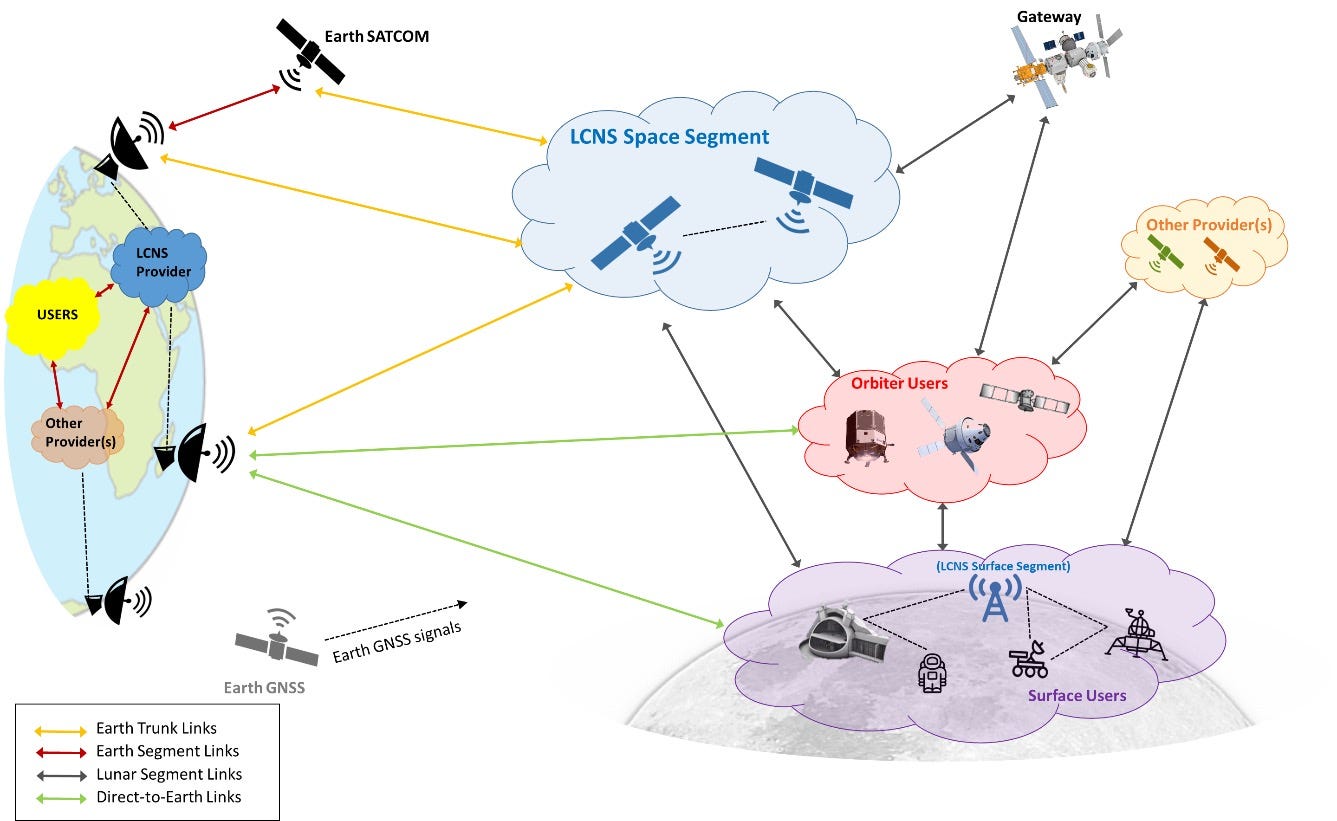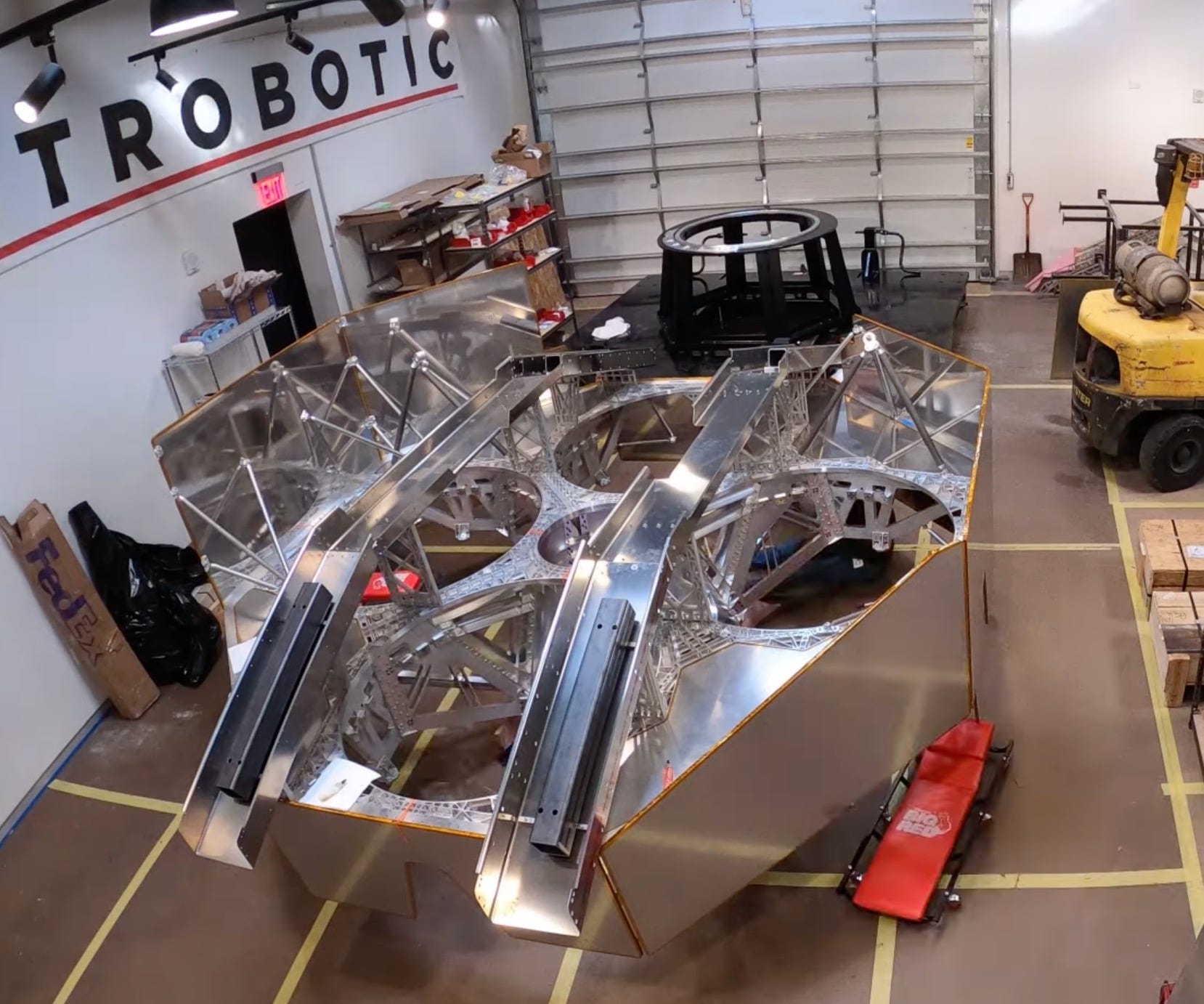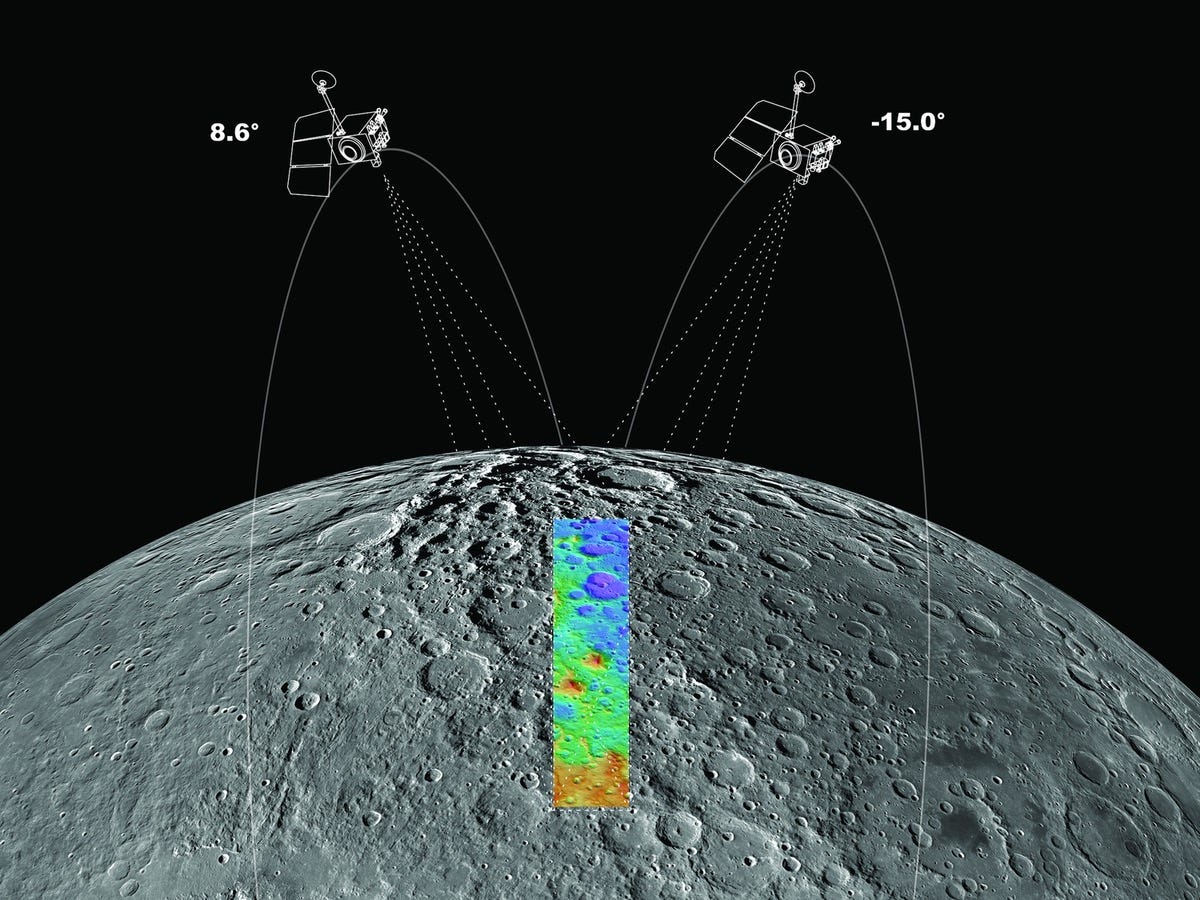Moon Monday #65: ESA’s Moonlight infrastructure plans, Astrobotic’s progress on key NASA mission, Apollo 17 landing site in 3D, and more updates
Highlight
This section is superseded by Moon Monday #98: ESA’s Moonlight plans forge forward
In May 2021, ESA funded two consortia of companies to design and analyze feasibility of a “lunar communications and navigation service” by end of 2022 as part of the agency’s Moonlight initiative. Such a system will enable cost-effective Moon missions, who’d no longer need their own hefty communications hardware and rented infrastructure. It will also facilitate missions to the Moon’s farside and poles, and allow rovers to communicate even when exploring areas with no Earth visibility. Such a service could also provide a common time reference for lunar-based fundamental physics and astronomy experiments, including farside radio astronomy. NASA is planning a similar service called LunaNet but ESA is farther ahead right now.
Surrey Satellite Technology Limited (SSTL) is leading the first consortium for Moonlight, with Airbus as one of the partners, while Telespazio is leading the second one, with Thales Alenia Space as one of the partners. ESA will eventually select either one of the two consortia, or a mix of both, to build and (optimistically) start operating Moonlight by 2028. ESA plans to make the service available commercially, and hopes that nations with smaller budgets or scope will take advantage of the cost effectiveness to send their own lunar missions.

Now, ESA has provided specific details on what capabilities we can actually expect from their commercial lunar communications and navigation network. One of the reasons ESA did this is because it wants to hear and integrate into Moonlight novel use cases and applications from companies, academic & scientific users, space agencies & governments, and anyone else relevant. Applications are due April 30, after which ESA will invite those with the best ideas to agency centers and related forums to mature their concepts, direct them to appropriate ESA funding mechanisms, and potentially integrate ideas into mission concepts too.
Related past development: As a pathfinder to Moonlight, ESA signed a contract with SSTL in September 2021 worth $23.5 million to get lunar communications services from the company’s aptly named Lunar Pathfinder orbiter. It will launch in 2024 and operate in a frozen elliptical orbit for at least 8 years to relay communications between Earth and robotic mission hardware on or orbiting the Moon. SSTL hopes for this service to be commercially used, especially by robotic missions to the lunar farside and poles.
Also related: Open Lunar Foundation’s timely blog post proposes that we can sustain lunar communications infrastructure such as Moonlight by deriving from best practices followed by network infrastructure providers on Earth coupled with strategies adopted by open source communities.
Exploration
As NASA prepares to launch the Artemis I mission on a roundtrip around the Moon in April or May, the agency has successfully tested all four RS-25 engine controllers on their SLS rocket. Meanwhile, engineers diagnosed the faulty controller which had delayed the launch earlier and found the problem to be a fault memory chip used to start the controller. Since that faulty unit was replaced, the issue doesn’t affect the controllers on SLS right now, and things look okay for fueling and defueling tests late next month.
Astrobotic has passed a key mission milestone by completing building a full-scale structural model of their Griffin lander, whose flight version will deliver NASA’s VIPER rover to the Moon’s south pole in late 2023 to study water ice as part of the agency’s CLPS program. The 5900-kilogram structural model will soon undergo a series of environmental tests, followed by ramp egress testing at NASA Glenn with a VIPER rover test model. These tests will inform Griffin’s flight build later this year.

NASA is seeking specific technology development proposals for another round of its “Tipping Point” awards, which help companies accelerate building of promising technologies. NASA will fund proposals chiefly concerning infrastructure required by future Artemis astronauts to sustainably live and work on the Moon. This includes but isn’t limited to lunar resource utilization, power distribution, and autonomous construction. For context, here are some lunar-infrastructure-related Tipping Point contracts NASA has awarded within the past two years.
- A $2.8 million award to Masten Space to accelerate development of its lunar night survival system.
- A $2.4 million contract to Sierra Space to further develop its carbothermal reduction process to extract oxygen from lunar minerals.
- Nokia’s 4G/LTE communications system to be tested on Intuitive Machines’ second Moon landing mission in December 2022 at the earliest.
- This next one’s not a Tipping Point contract but in March 2021, NASA awarded $700,000 each to five companies to design optimal vertical solar arrays that auto-deploy up to 10 meters in height, retract for relocation, be stable on steep terrain, are resistant to abrasive lunar dust, all while minimizing mass and volume to ease delivery (of the eventual contracted hardware) to the Moon.
Science
The outreach team of NASA’s Lunar Reconnaissance Orbiter (LRO) has released nice 5-meter/pixel 3D terrain views of Apollo 17’s landing site so we can appreciate the topography of Taurus-Littrow valley. The released products include color-shaded and slope-shaded relief maps, a topophoto map, orthophoto mosaics, and individual stereo pairs from LRO’s Narrow Angle Camera that helped make this all possible. Part of the astronaut traverse area is also available at 2 meters/pixel. The LRO outreach team maintains a Featured Downloads page where we can find more such visual products.

How does NASA LRO capture 3D images?
LRO pulls off the feat using a single camera. When passing above a feature of interest, it tilts itself by a certain degree and snaps an image as per pre-sent commands by missions operators on Earth. As the same feature comes into view about two hours later in the next orbit, LRO is made to tilt again, this time in the opposite direction, to get another image. These two images are then processed here on Earth to make stereographic images just like we do for 3D movies. With this method, LRO mission designers are taking advantage of the fact that the Moon rotates slowly about itself—once every 27 days.

Related: I made a video out of some LRO stereo images so you can watch features on the Moon in 3D.
More Moon
My latest lunar article is on the sheer diversity of mobile robots which will explore the Moon’s surface over the next five years.
Dear reader, I’m publishing this one-of-a-kind Moon exploration newsletter for free, with no ads. And it will stay that way. If you like my work, support me to keep it going.
